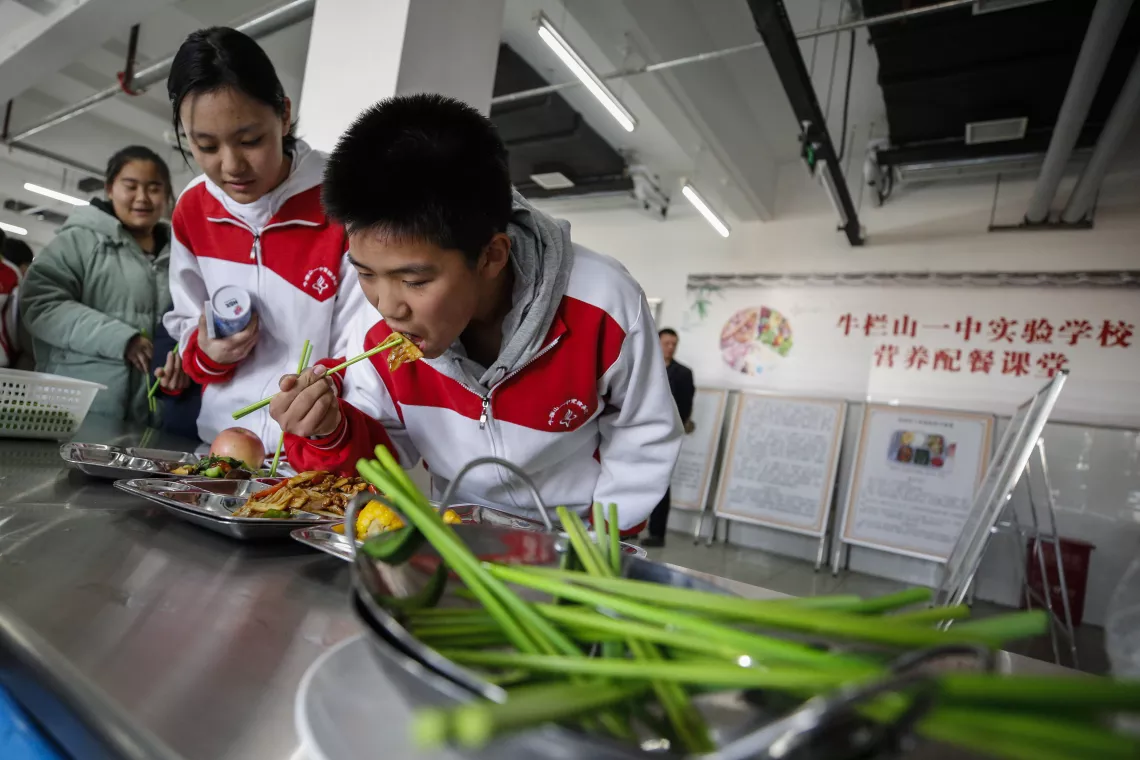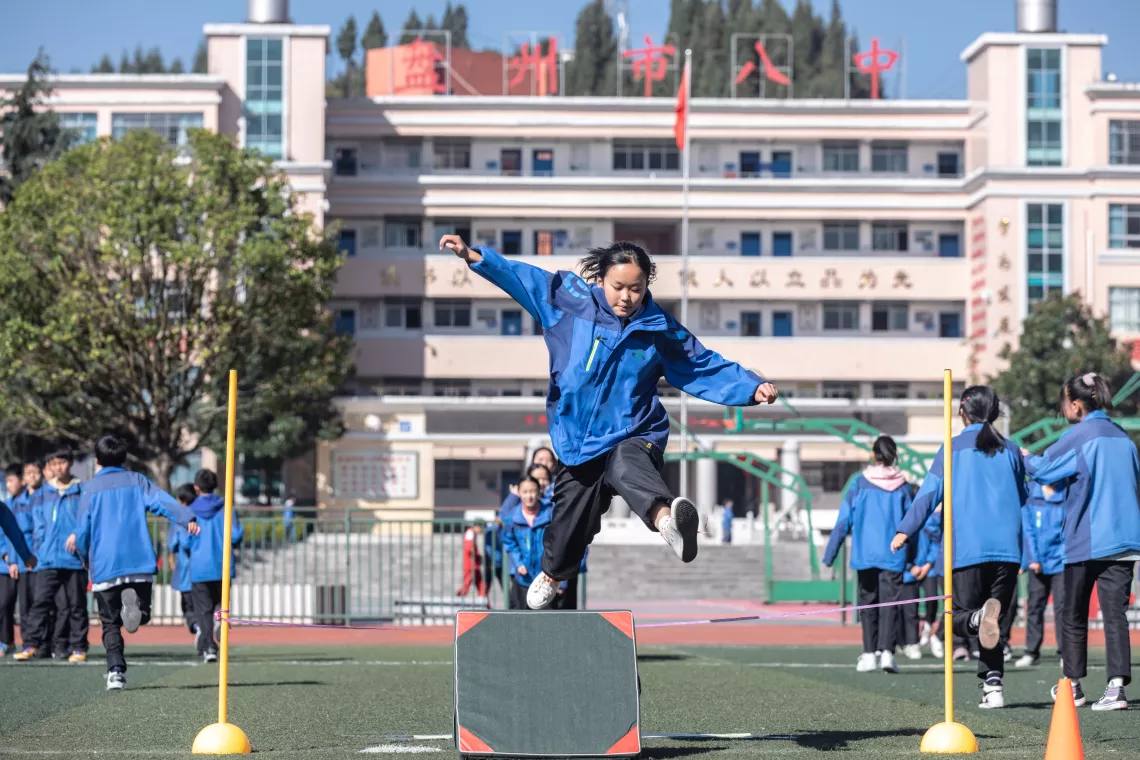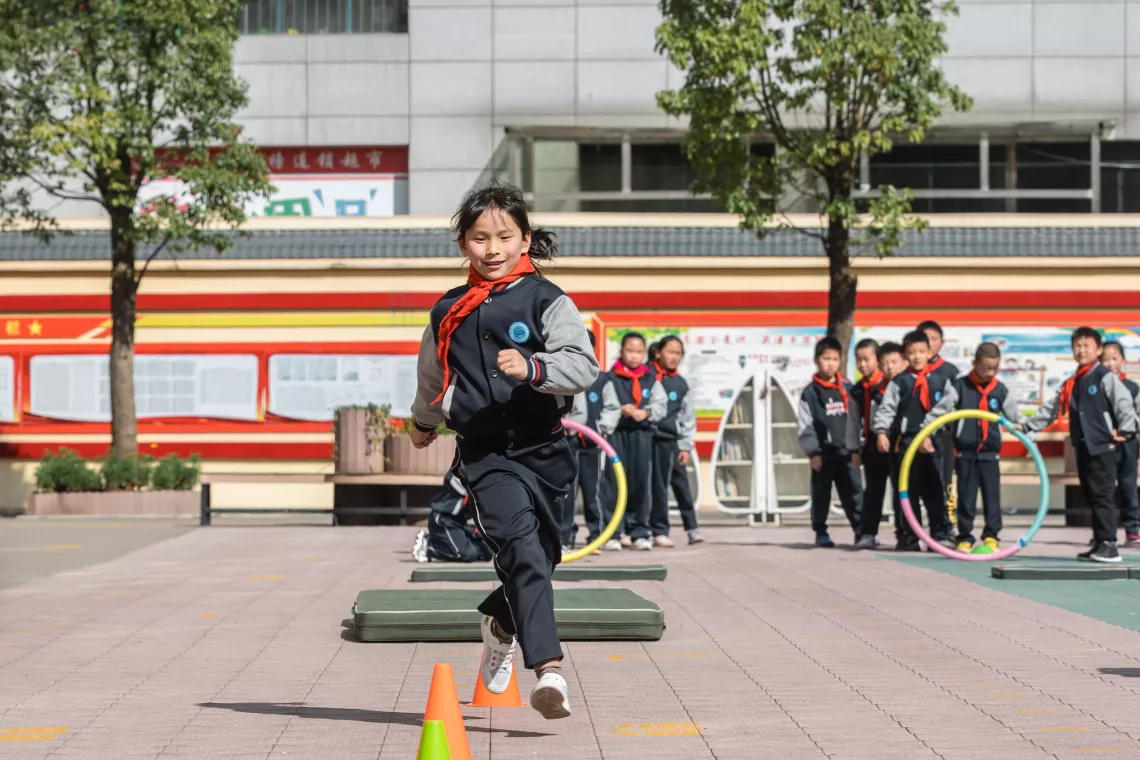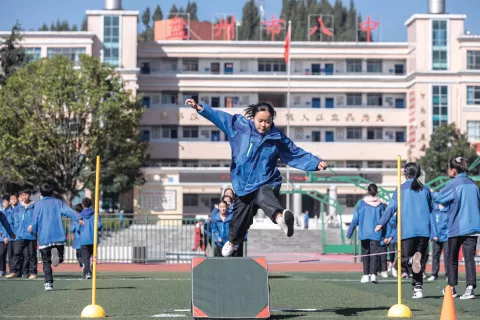A Healthy Weight for Every Child in China
Addressing the challenge one school at a time

- Available in:
- 中文
- English
MALNUTRITION has not disappeared in China; it has just changed its face.Today, China has one of the largest groups of overweight and obese children in the world — over 15 million children. This change has occurred rapidly over the last 25 years. In 1985, 16 percent of Chinese school children were undernourished, and 1 percent were overweight or obese. In 2020, about 19 percent of children aged 6 to 17 were overweight or obese, while 2 percent were undernourished.

Rapid economic growth and urbanization have changed the dietary patterns of Chinese people, in particular, more consumption of highly processed and easily accessible food has contributed to the increase in the number of children who are overweight. Sales of highly processed food have skyrocketed in the last decade, with little regulation to restrict sales to children. For example, there are no taxes imposed on products that contain high amounts of sugar, and food labelling is not regulated to inform or educate consumers. Sales of sugar-sweetened beverages nearly doubled between 2014 and 2019.

Research has found that consumption of ultraprocessed food is associated with social activities. In China, it is common for teenagers to share unhealthy food, milk tea, snacks and pancakes when they meet friends. As household income has increased, Chinese adolescents have more cash to spend on unhealthy snacks and food.
How to tackle this complicated issue?
The Chinese government is working on it. With support from UNICEF, the government has initiated the “Nutrition School” program. This program selected 12 primary and secondary schools from eight provinces and cities and tested a range of activities. The program focused on increasing nutrition literacy, with training for students, teachers and parents. Students are required to be physically active for 60 minutes per day and to play sports regularly. School cooks are trained in preparing meals that are healthy and tasty. The program also restricted the marketing of ultra-processed food and sugar-sweetened beverages in schools while setting up sport facilities on campuses.

The pilot has performed well. One year in, all schools in the program have organized nutrition-related activities for students and training for teachers and cooks. Over 80 percent of schools offered nutrition sessions to students and provided parents with nutrition information. A follow-up survey of a participating school showed that over 90 percent of students and parents found the nutrition activities helpful. Moreover, 90 percent of the school’s cooks reduced the use of oil, salt and sugar. There are plans for this model to be expanded to more cities.

But schools alone cannot reverse the boom in child overweight and obesity in China. Children also need parents to choose healthier lifestyles, companies to be more accountable, and strengthened government policies related to food labeling and marketing of highly processed foods to children.

This article is adapted from NYT KIDS China June issue.





